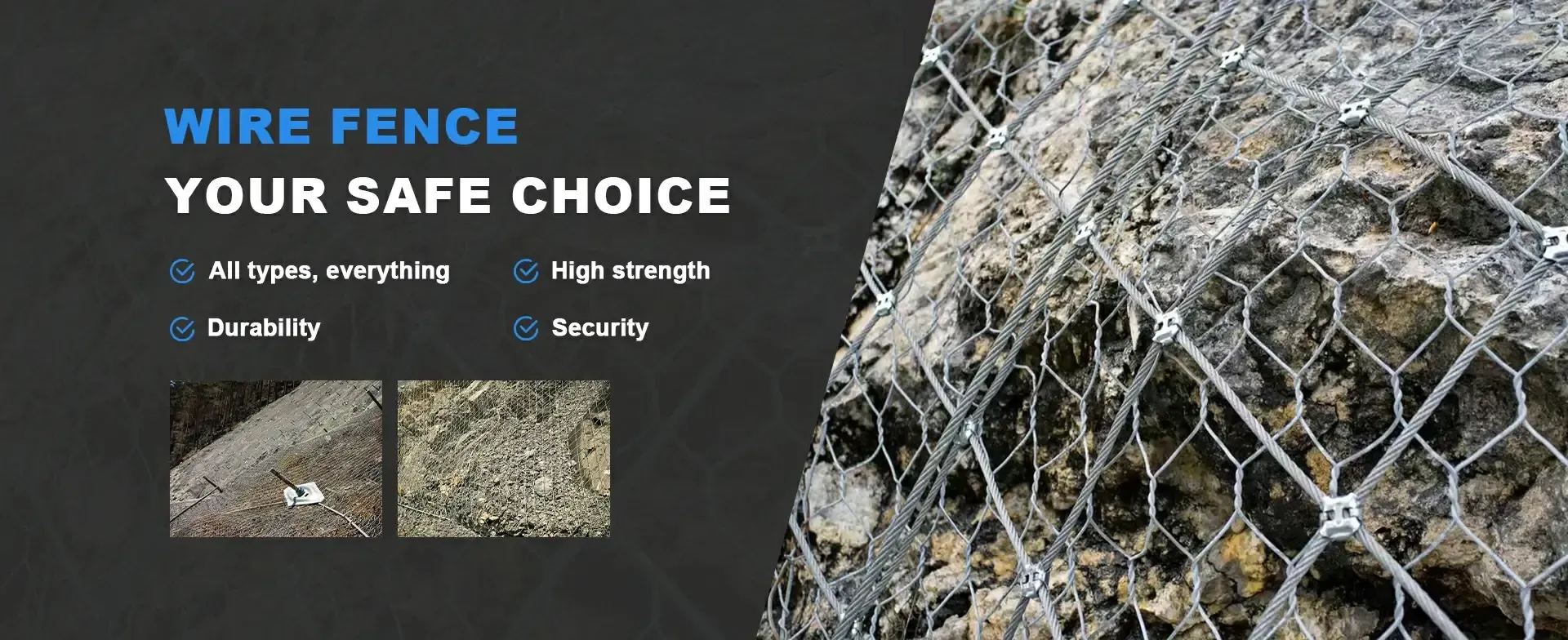Авг . 16, 2024 16:36 Back to list
Factory Production of Gabion Box Retaining Walls for Effective Landscape Solutions
Understanding Gabion Box Retaining Walls Factory Insights and Benefits
Gabion box retaining walls are increasingly gaining popularity in civil engineering and landscaping due to their durability, versatility, and environmentally friendly characteristics. These structures, made from wire mesh filled with stones or other materials, offer a robust solution for preventing soil erosion, creating terraces, and managing steep slopes. This article delves into the manufacturing processes of gabion box retaining walls, their benefits, and their applications.
Manufacturing Process
The process of producing gabion boxes begins with sourcing high-quality materials, specifically the wire mesh that forms the gabion itself. The mesh is typically made from galvanized steel or PVC-coated wire to enhance its resistance to corrosion and environmental wear. The wires are woven tightly to create a strong, flexible structure capable of withstanding significant pressures from soil and water.
Once the wire mesh is ready, it is cut and shaped into boxes of various dimensions, depending on the project requirements. Each box is then filled with stones, boulders, or recycled materials, which serve as the primary stabilizing agents. The filling stones are carefully selected to ensure optimal drainage properties and load distribution, which are critical for the wall's stability.
After filling, the gabion boxes are sealed and transported to the construction site. The ease of transportation and installation, thanks to their modular nature, makes gabion walls a preferred choice for many engineers and contractors.
Benefits of Gabion Box Retaining Walls
1. Cost-Effectiveness Gabion walls are often more affordable than traditional concrete walls, as they require less material and labor. The use of local stones reduces transportation costs, and their modular design allows for quicker assembly.
2. Environmental Impact Gabion walls are environmentally friendly, as they provide natural drainage, preventing water accumulation and reducing erosion. Over time, vegetation can grow within the gaps of the stones, further enhancing the site’s ecological value.
gabion box retaining wall factory

3. Durability Gabion walls are highly resilient; they can withstand harsh weather conditions, heavy rainfall, and the pressure of shifting soil. Their flexibility allows them to adapt to the settling ground without cracking, a common issue with rigid walls.
4. Aesthetic Appeal Available in various sizes and shapes, gabion walls can be designed to blend seamlessly with the landscape, offering an attractive feature for gardens, parks, and urban areas.
5. Versatility Beyond retaining walls, gabion boxes can be utilized in a multitude of applications, including riverbank stabilization, noise barriers, and decorative features in landscaping projects.
Applications in Construction and Landscaping
Gabion box retaining walls are utilized in a wide range of situations. In construction, they are essential for managing erosion in areas with steep slopes or high water flow, such as near rivers and lakes. They provide a practical solution in urban developments, where space is limited.
In landscaping, gabion walls serve as visually appealing features that can be incorporated into terracing, garden borders, and seating areas. Their ability to blend with natural elements makes them a favored choice among landscape architects.
Conclusion
Gabion box retaining walls represent a practical and innovative solution for modern construction and landscaping challenges. Their durability, cost-effectiveness, and environmental benefits make them an attractive option for both professionals and DIY enthusiasts alike. As demand for sustainable building practices continues to rise, gabion walls will likely play an increasingly prominent role in future landscaping and civil engineering projects. With advancements in manufacturing technology, the potential for gabion walls is only beginning to be realized, promising exciting possibilities for the construction industry.
-
Understanding Load-Bearing Capacity of Gabion Boxes
NewsJul.17,2025
-
The Importance of Corrosion-Resistant Wire in Gabion Construction
NewsJul.17,2025
-
How Gabion Boxes Prevent Soil Erosion Effectively
NewsJul.17,2025
-
Environmental Benefits of Gabion Cages
NewsJul.17,2025
-
Best Stone Types for Gabion Walls with Steps
NewsJul.17,2025
-
Benefits of Using Rock Gabion Baskets in Landscaping
NewsJul.17,2025
-
The Role of Galvanized Gabion Mesh in Riverbank Protection
NewsJun.26,2025






